For over 15 years, television has been an integral part in the lives of most modern people. Recently, there has been an active transition from analogue television broadcasting to digital. Therefore, today the question of choosing an antenna for TV is more relevant than ever. The advantage of digital television DVB - T2 is that it allows you to view more TV channels in much better quality.
There is a wide variety of devices and devices that allow you to watch television broadcasts in digital format. They differ from each other both in the range of received frequencies and in the type of signal amplification. The editors of the site "bestx.htgetrid.com/en/" have prepared for your attention, taking into account the advice, recommendations and reviews of most buyers, a rating of the best antenna models for digital television.
Content
Kinds
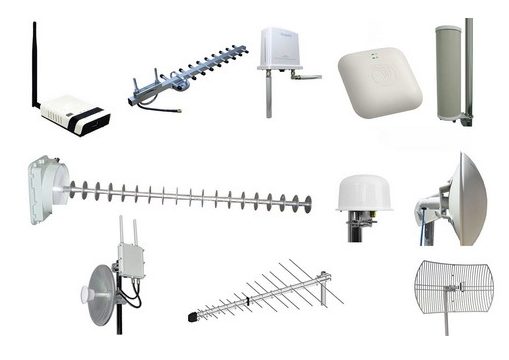
How to choose a TV antenna, which company is better, what are the main selection criteria? Before purchasing such a device for viewing, first of all, you need to decide on the conditions in which it will be used. Conventionally, all antennas intended for watching TV differ from each other:
- Place of installation, placement. There are indoor and outdoor (outdoor) models.
- The type of amplification of the incoming signal. Active and passive devices are used.
- The range of received frequencies. There are all-wave and range devices.
What antennas are there, which one is better to buy, what to look for when choosing? An indoor antenna is a device specially designed for everyday indoor use. However, it should be noted that it is advisable to use it only when the incoming TV broadcast source has a sufficiently stable and high level. In order not to be mistaken when choosing, it should be noted that it is recommended to purchase such devices for home use for people who live near television towers (the distance from the tower should not exceed 3-5 km).
External models, or as they are also called external, have high reception characteristics. As a rule, they are actively used in apartments, private and country houses, dachas located within cities and beyond. They allow you to receive a stable TV picture over a long distance.
Passive devices are not equipped with TV signal amplifiers. They do not need to be supplied with additional power. Amplification of incoming TV waves is provided by their design.
Active antennas are additionally equipped with a special balanced amplifier. Power is supplied to it, which is supplied via a cable from a special adapter (power supply unit) or a digital receiver used. Such models used at home are capable of providing high-quality and stable viewing of broadcast television channels even in those parts of the country where passive devices refuse to work.
Range devices are used when it becomes necessary to capture only meter waves (MW) or decimeter waves (UHF).It should be noted that television, which broadcasts in the DVB - T2 format, operates only in the decimeter wavelength range. Therefore, it is recommended to use band devices to watch such TV. The design of all-wave models allows you to work in both ranges - MV and UHF. Therefore, they are used to watch digital and analogue broadcasts.
Attention! The cable is one of the most important parts of any TV reception system. It is in the cable that the received and amplified broadcast of the TV channel is lost. Therefore, if a long cable is used for connection, you must first of all pay attention to its quality characteristics. It should not burst when exposed to low and high temperatures. Most experts recommend using cables made of copper rather than aluminum.
Do I need to buy an amplifier
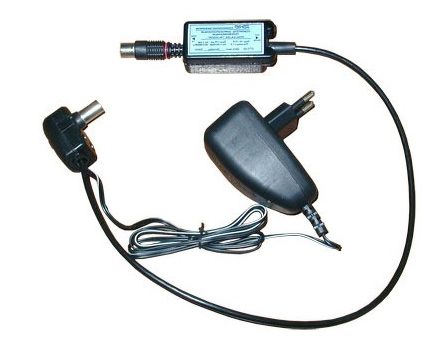
An amplifier for television antennas is a relatively inexpensive device that is available to almost everyone. True, it should be noted that not in all cases there is an urgent need to use it. For example, if the device perfectly receives the incoming broadcast of a TV channel without an amplifier and provides a good picture, then there is no need to purchase it.
You can decide whether you need an amplifier empirically. To do this, you need to connect a model that is equipped with such an amplifier to the TV. If the picture quality has improved after such a connection, then you should think about purchasing such a device.
Main selection criteria
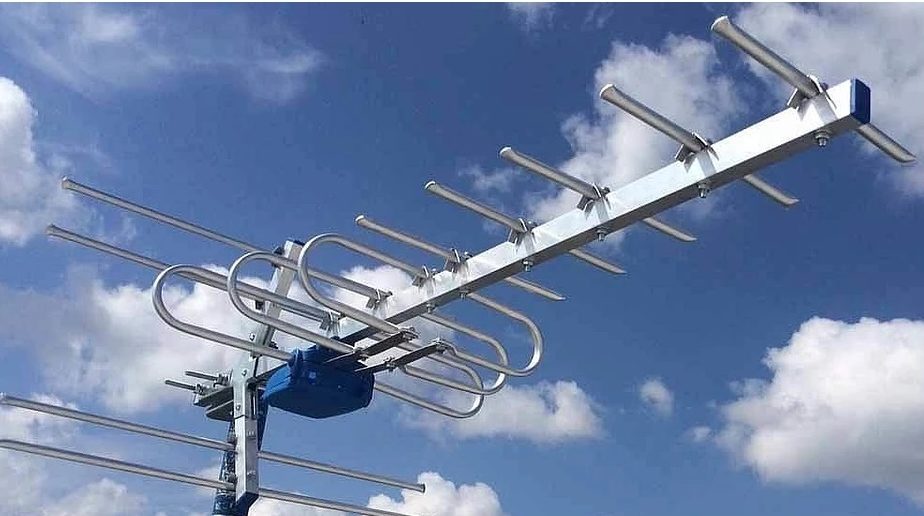
There are several key characteristics that you need to pay attention to, first of all, when choosing a television antenna for watching digital TV. During the selection of such a device, you need to familiarize yourself with:
- With the type of fastening used (internal or external). As a rule, devices that are intended for indoor use are worse at catching incoming TV broadcasts. However, it is much easier to install them yourself, with your own hands.
- The ability to receive an all-wave signal. Devices that have this all-wave reception capability are able to pick up a larger number of TV channels.
- The type of power used (network or rechargeable battery). The vast majority of devices use the network as a power source. However, there are standalone devices that can be powered by batteries.
- Amplification of the incoming signal.
Also, when choosing, it is recommended to pay attention to the terrain in which the device will be used, and to the presence of various obstacles (trees, houses). For example, if there are no obstacles to the incoming TV broadcast, or if a person lives on a hill, then you can purchase a simpler (passive) device for accessing digital television.
Best Antennas for Digital TV for 2020
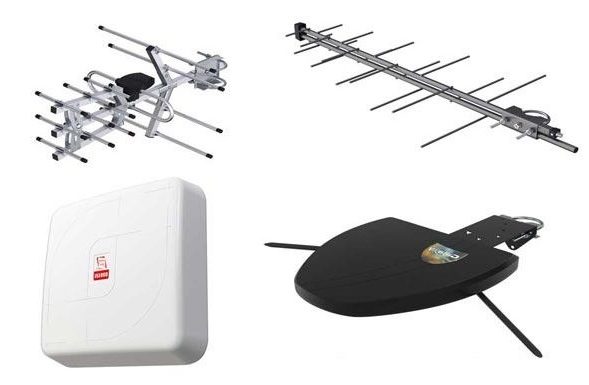
A large number of companies are engaged in the development and production of television antennas. It is worth noting that not all models produced under popular brands on the market are suitable for working with domestic standards for transmission, data reception, and frequency range reproduction. When choosing the highest quality models for receiving digital television, the following parameters were taken into account:
- Specifications;
- The ratio of such criteria as price / quality;
- Consumer reviews and advice;
- Functional;
- Rating.
Where can you buy a TV antenna, how much does it cost? You can buy such a device both in specialized and online stores by ordering it online. It is worth noting that branded models are slightly more expensive. Also, the cost of such devices depends on their type (indoor, outdoor, broadband), the presence of an amplifier and technical parameters.
Is it possible to make an antenna for TV yourself and how to do it? Today on the Internet you can find many calculations, drawings and step-by-step instructions, thanks to which you can make a TV antenna yourself.However, in most cases, as practice shows, it is much cheaper and more economical to purchase it on the market.
Review of the best models of indoor antennas for digital TV
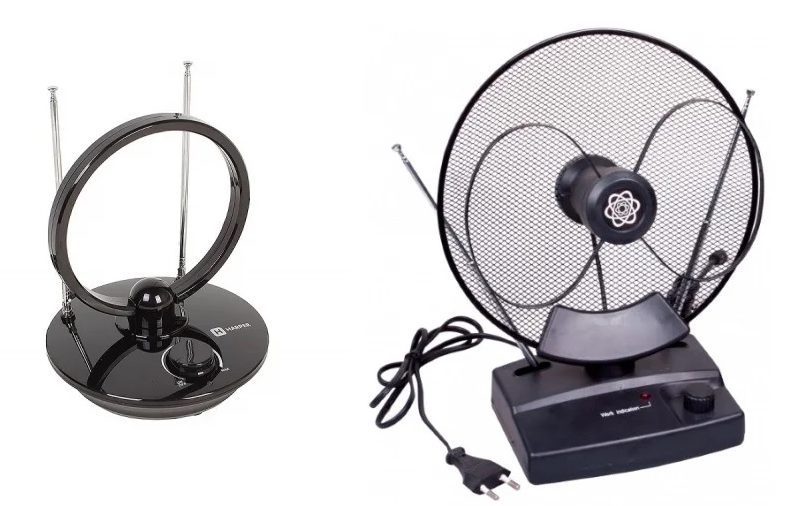
Indoor antennas are capable of operating in both meter and decimeter ranges. They stably receive incoming television broadcasts at a distance of no more than 30 km from the television tower. However, it should be noted that they have certain restrictions on the reception of incoming TV waves. They also need to be configured before use.
The advantage of such room devices is their compactness, low cost and ease of installation. If necessary, they can be quickly moved to another location within the room and reinstalled. One of the leaders in the market for indoor-type antennas, which are used to receive digital TV, is the REMO company.
REMO BAS - 1318

Budgetary, the best inexpensive model of an indoor antenna for TVs from the popular manufacturer REMO. Equipped with an amplifier and is capable of working with both analog and digital broadcasting formats (DVB - T, DVB - T2). It has a non-standard original design and compact dimensions. The body is made of radio-transparent polymeric materials that do not adversely affect the radio frequency characteristics of the device.
This popular model for individual use is additionally equipped with a wall bracket, thanks to which it can be quickly mounted on the wall near the window. Able to carry out its work in the following temperature range: from -45 to +40 degrees Celsius. The operating temperature range at 100% air humidity is +25 degrees Celsius. Also, this device is equipped with a cable (length 5 m) and a power supply. For its operation, you do not need to use additional matching devices. The working range of REMO BAS - 1318: VHF (gain 30 dB) and UHF (gain 31 dB).
Advantages:
- Good equipment;
- Compactness;
- Easy to install;
- Light weight (1.5 kg);
- Reasonable price (the average cost of the device is 965 rubles);
- The presence of an amplifier;
- The ability to receive both digital and analog TV.
Disadvantages:
- To use, you need to be connected to the electrical network, which is not always convenient;
- Small radius, signal reception distance.
General Satellite AV - 962A

Used to receive television programs that are broadcast in digital and analogue format. Carries out work in the range of meter and decimeter waves. Additionally equipped with a special built-in amplifier. Thanks to the special function of manual signal gain adjustment, this device can be used to watch digital TV channels even at long distances from the broadcasting station transmitting TV (the reception range is up to 20 km).
It has a simple and reliable design, it is perfectly combined with almost all existing models of television receivers. In addition, it should be noted that this device can also be used for listening to radio stations, since it also works in the FM band.
The General Satellite AV-962A is equipped with indicators that allow you to monitor the power status and adjust the gain of the incoming signal. The maximum gain level is no more than 30 dB. The noise figure is 3 dB. The output resistance parameters are 75 ohms. A network (220V) is used as a power source. Supplied complete with cable (1.5 m).
Advantages:
- Functional;
- The ability to independently adjust the signal gain;
- Compactness;
- Cost (the price of the device is about 990 rubles);
- Availability of control indicators.
Disadvantages:
- Reception radius (at a considerable distance from the transmitter, it is difficult to catch the signal);
- Short cable;
- The amplifier is difficult to set up.
HARPER ADVB - 2969
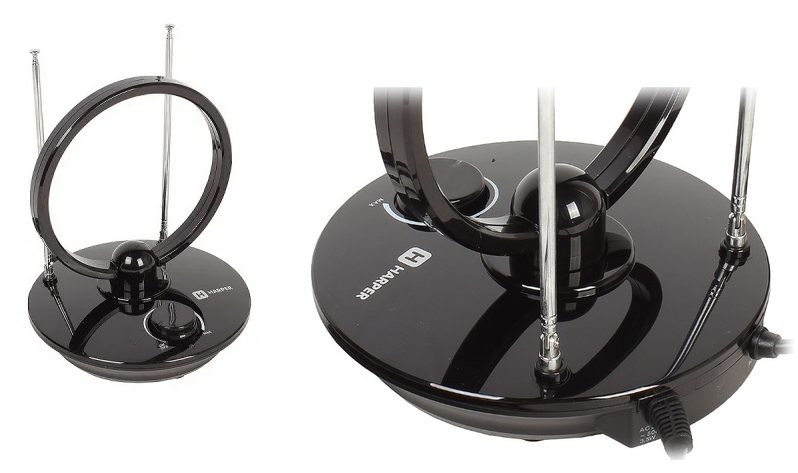
An active, compact device that is ideal for indoor installations. Receives signals in meter and decimeter ranges.Perfect for receiving TV broadcasts that are broadcast in digital format DVB - T2. Equipped with an original case made of glossy black plastic. On the surface of the body there are 2 telescopic antennas, as well as a special regulator that allows you to control the power of the incoming signals. The gain is 30 dB. The noise figure is 3dB. The mains supply (220V) is used for power supply. Supplied with 1 m cable.
Advantages:
- Acceptable cost (714 rubles);
- Compactness;
- Easy to install;
- Elegant appearance;
- Possibility of self-regulation of amplifier power.
Disadvantages:
- Power cord too short;
- Receiving sensitivity (to get a stable signal, it is better to use it near the transmitter).
Rating of high-quality models of outdoor (outdoor) antennas for digital TV reception
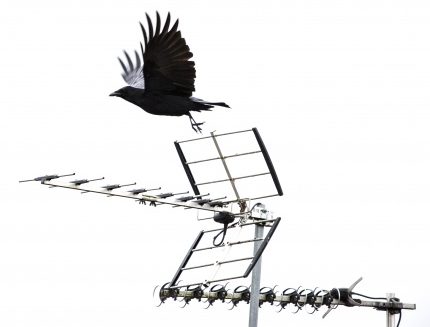
Outdoor models, due to their design, have high power and are able to capture television broadcasts at a distance of up to 50 km from the transmitter. When choosing such models, you need to take into account the presence of a variety of obstacles that may arise while receiving TV channels. Typically, such devices are capable of receiving well television broadcasts over long distances. However, in this case, it is recommended to pay attention to the models that are equipped with a special amplifier.
Delta Н311А1
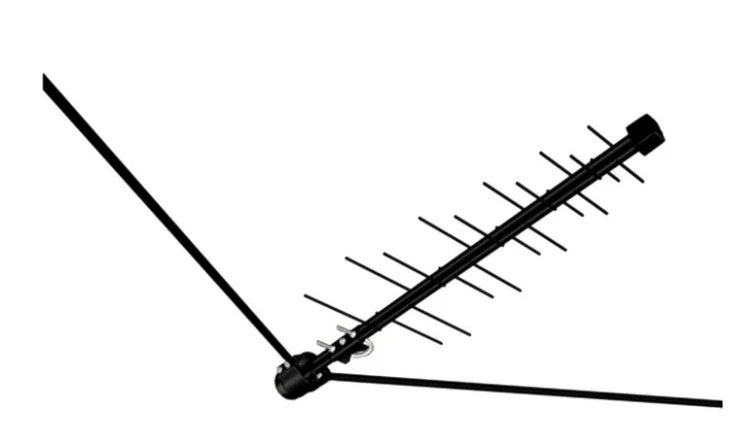
The best, according to buyers, an active all-wave directional television antenna, which is additionally equipped with a broadband amplifier and is able to pick up even a weak signal. Also in this device there is a special power supply unit with a separator. At a distance of up to 40 km, from the nearest repeater, the Delta H311A1 perfectly picks up incoming signals. It should be noted that the amplifier that this model is equipped with is capable of amplifying only the signals of the UHF channels.
Delta H311A1 can carry out its work both in the decimeter and in the meter range. The gain level of the incoming UHF signal is 20.5 dB. The protective action level is 12 dB. The design type of this model is 2 in 1 (it consists of a special vibrator and a wave antenna). All structural elements are made of steel and additionally coated with a layer of paint. The fasteners that come with the Delta H311A1 are galvanized. The assembled length is 83 cm and its weight is 1.6 kg.
Advantages:
- Acceptable cost (1,024 rubles);
- Good signal reception radius;
- The presence of an amplifier;
- Complete set (supplied with mounts);
- Small size.
Disadvantages:
- Amplifies only the UHF signal;
- Not suitable for indoor installation.
GODIGITAL AV 6520 active with amplifier
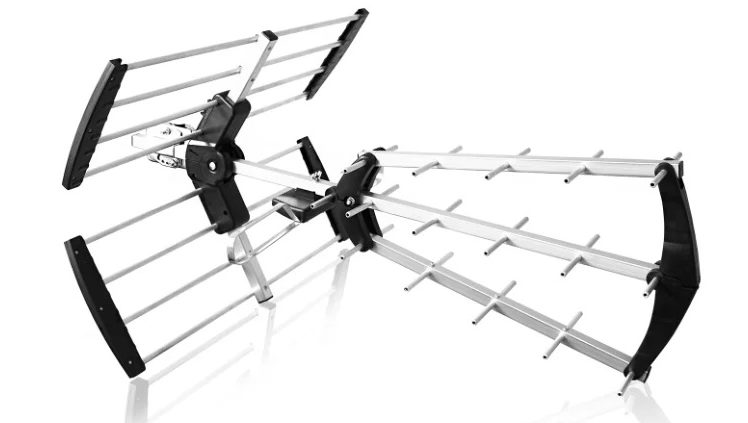
It is an outdoor active device that performs its work in the decimeter range. Can be used to receive digital and analog signals (DVB - T2, UHF). This model is equipped with a low noise, high power amplifier. To power this amplifier (5V), you can use a DVB-T2 digital receiver. The range of reception of digital TV broadcasting of this model is about 110 km. The gain of the incoming signal is 44 dB. There is an option for self-adjusting the gain.
Advantages:
- Perfectly picks up signals in all weather conditions;
- Impressive reception radius;
- The presence of an active amplifier.
Disadvantages:
- Cost (2090 rubles);
- Bulky design.
Locus Meridian 07AF Turbo
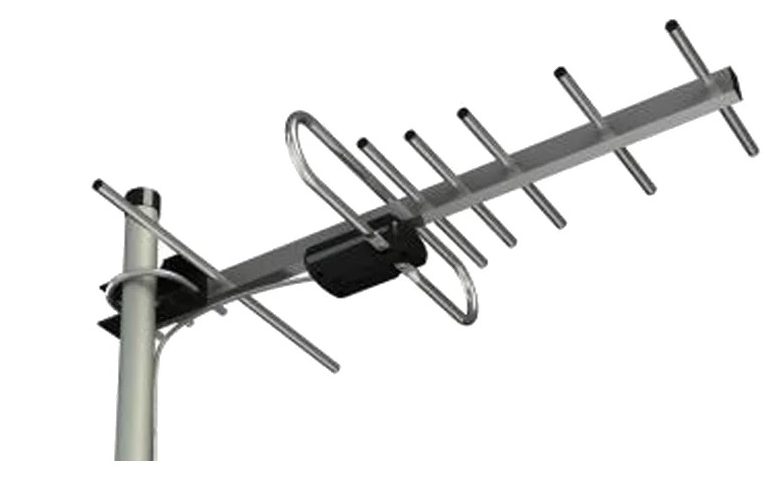
Street, popular among consumers model, which is equipped with an amplifier. All structural elements are made of aluminum. It can be used to receive digital and analog television. Type of connection used: F - connector. Equipped with a special balanced amplifier, which significantly increases the range of its reception. The gain level is 30 dB, the noise figure is 0.7 dB. Power supply requires 5 V voltage (not supplied with power supply).If necessary, it is recommended to use power injectors belonging to the LI series.
Advantages:
- Acceptable cost (520 rubles);
- The material from which the structure is made is aluminum;
- Powerful amplifier;
- Reception of analog and digital TV.
Disadvantages:
- Difficult to wall mount;
- Meager equipment.
Comparative characteristics of antennas for digital TV
| Name, description | Type of allocation | Signal gain (dB) | Cost (in rubles) | |
|---|---|---|---|---|
| REMO BAS - 1318 | Internal | 30 | 965 | |
| General Satellite AV - 962A | Internal | Up to 30 | 990 | |
| HARPER ADVB - 2969 | Internal | No more than 30 | 714 | |
| GODIGITAL AV 6520 active with amplifier | External | 44 | 2090 | |
| Locus Meridian 07AF Turbo | External | 30 | 520 | |
| Delta Н311А1 | External | 20.5 | 1024 |
When choosing an antenna for receiving television programs, it is necessary to take into account some nuances. For example, first of all, you need to pay attention to the type, as well as the range of operation of such a device. It is also recommended to purchase models that are equipped with a signal amplification function. If you have experience in using the antennas presented in our rating, or you are using another model to watch TV channels in DVB - T2 format, please share your opinion with us in the comments.












